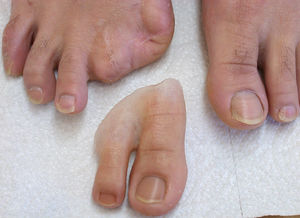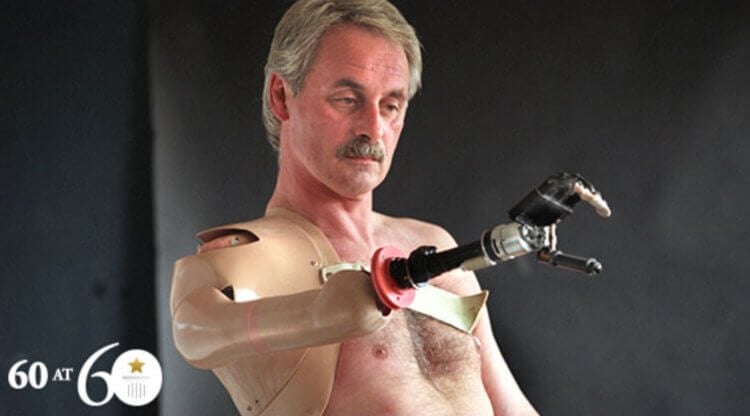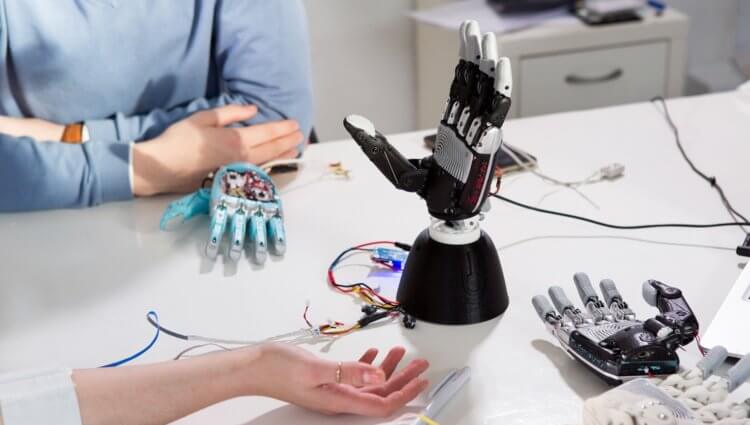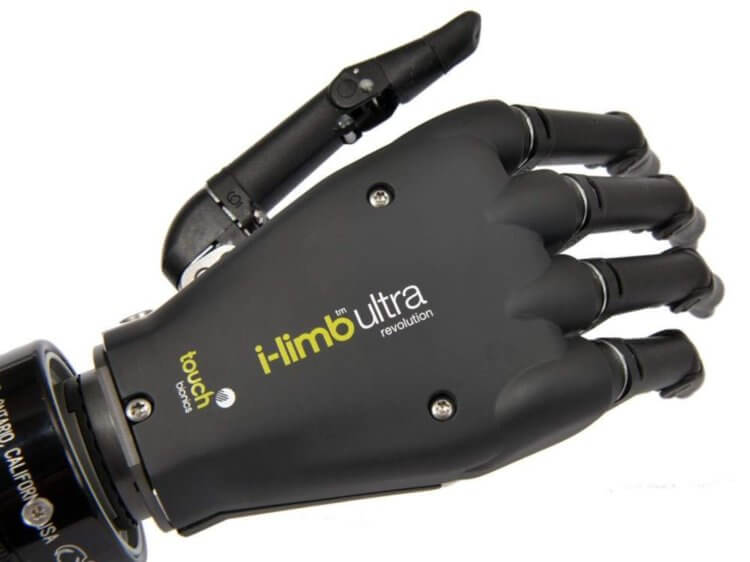. A silicone toe prosthesis restores the natural anatomy of the patient's foot, can reduce stress and prevent migration and displacement of neighboring toes. .
- Performance of orthoses
- Book an appointment with a podiatrist
- aesthetic toe prosthesis
- aesthetic finger prosthesis
- Modern prosthetic feet
- Surgical technique
- Rehabilitation after surgery
- Realism and satisfaction
- Realistic prosthetics
- Care afterwards
- When should it not be done?
- Types of prostheses: advantages and disadvantages
- Creating an aesthetically pleasing limb
- The first person with a modern bionic prosthesis
- The most popular arm and leg prostheses
- Eye prostheses (prosthetic eyes)
- finger prosthesis
Performance of orthoses
For various foot pathologies, reliable fixation with an orthopedic aid is required. In the Moscow podiatry practice, high-quality and safe materials are used for the manufacture of toe orthoses. Each device is made taking into account the anatomical structure of the sling, the severity of the disease and the type of foot.
Statistically, 30 % of people are diagnosed with a foot deformity. This pathology leads to the development of diseases of various organs of the musculoskeletal system.
An orthosis is a foot splint that prevents joint deformation and helps to relieve tension in the ligaments. It is used for treatment, restoring the function of various parts of the musculoskeletal system and reducing joint mobility. Athletes and people with an active lifestyle use insoles to prevent injuries.
Types of insoles depending on their function:
- prophylactic – to prevent foot and toe diseases, to reduce the risk of complications, for people who are active in sports;
- corrective – for certain symptoms of diseases of the skeletal and muscular systems;
- Durable products – designed to be worn over a longer period of time or permanently for foot dysfunction.
There are versions with and without inserts. There are orthopedic aids for bone and toe correction, for reducing and evenly distributing the load, extensors, interferers, heel correctors.
The effectiveness of orthoses is confirmed by doctors in many countries around the world. Orthopedic treatment is aimed at relieving pain, restoring the function of the damaged parts of the musculoskeletal system, sensitivity, improving the balance of muscles and joints, balance and gait.
![]()
Book an appointment with a podiatrist
Orthoses support the correct anatomical alignment of the foot. In this way, they help prevent the development of various pathologies:
- Blistering on the sole, between the toes, due to constant pressure, friction in certain places;
- Nail plates peel off and grow in;
- the connective tissue proliferates, thickening and efflorescence occur;
- constant pain in the knees and feet when walking, problems choosing comfortable shoes;
- Microcirculation disorders often lead to increased sweating and thus to fungal infections.
Foot problems affect the entire musculoskeletal system. The function and mobility of the knee joint are impaired, spinal and posture problems occur, and the risk of osteoarthritis, arthritis and hip pathology increases.
aesthetic toe prosthesis

. After losing a toe or foot through trauma, frostbite, accident, or amputation, small, natural things like typing or playing a musical instrument become a necessity.

aesthetic finger prosthesis
& Contact your customers in one place all year round
Filter: to find the right product faster.
terminology: to find the most common terms used in the industry.
Brands: to have a larger selection.
Products .Relevance: to improve the relevance of the offer.
Other
Help us improve our services:
With MedicalExpo you can: Find a distributor or retailer near you | Contact a manufacturer for a quote or estimate | View product specifications and technical data for the most popular brands | View online documentation and catalogs in PDF format.
* All prices exclude customs duties, taxes and delivery costs and do not include installation or commissioning costs. Prices are indicative and may vary depending on country, raw material prices and exchange rates.
Modern prosthetic feet
Thanks to recent advances in foot prosthetics, the toes and arch of a prosthetic foot can often be shaped to be virtually indistinguishable from a healthy foot. It is known that both patients and those around them perceive the heel more than the foot, regardless of whether the person is sitting or standing. Therefore, it is not only physiologically but also psychologically important that the prosthetic foot resembles a normal, healthy foot. So the patient can feel comfortable and natural in it.
The creation of artificial toes from so-called toeless foot prostheses is not only considered the most individual approach, but is also a very time-consuming process in which the plaster is first removed from the metatarsal of the healthy foot. Then a one millimeter thick layer of special foam is applied, rolled out and the desired shape of the prosthetic foot is recreated by eye.

The toes are not marked as a continuation of the foot axis, but in the valgus position. It is important to note their length and position. For some people, the second toe is slightly longer than the first toe, for others it is the other way around. These two toes are made in their natural size, while the third and fourth toes are shortened because the prosthetic foot is in most cases slightly narrower than its model.
All details are applied to the surface of the prosthesis with a pencil and then the individual toes are formed by separating them from each other, rounding them and creating the nail bed like a healthy limb. First, a large block of soft acrylic about 0.2 mm thick is cast, then the nails are cut from it and finally each nail is glued to the prepared nail bed. The surface of the nail must be about half a millimeter deeper than the surrounding material. If desired, the artificial nails can be covered with nail polish.
Surgical technique
To gain access to the affected joint, the surgeon makes an incision in the skin and soft tissue protrusion. All procedures are performed through this incision. First, a visual inspection of the tissue is carried out and the current condition of the organ is assessed. The doctor then removes all diseased bone fragments and carefully grinds the edges.
The next step is to insert the prosthesis directly. Depending on the extent of the lesions, joint replacement can be total or partial. Once the main manipulation is completed, sutures, drains, splints and an aseptic dressing are applied.
Rehabilitation after surgery
Recovery from surgery is quite quick. The next day the patient can stand up and walk on crutches. The average recovery time is two months. Once the tissue has healed and the joint capsule has formed, full loading of the joint is possible.
An individual rehabilitation plan is created for each patient. The program includes physical therapy, physiotherapy, massage and swimming. The treatments help to strengthen the muscles. By gradually increasing the load, you can quickly return to your active lifestyle.
Advantages of placing implants in 'Mother and Child' clinics:
Endoprosthetics is a modern and effective method of restoring mobility to damaged joints. This procedure can help you forget about pain and discomfort and ultimately improve your quality of life. Call our representatives to learn more about arthroplasty.
Realism and satisfaction
The product was designed to provide the most natural and realistic feel possible. It looks and feels like real skin. The edges of the nipple adapt very well to the rest of the breast. With proper care, the nipple prosthesis can be very long-lasting.
Naturally!!! Advanced Nipples are also resistant to a variety of physiological, physical and chemical factors such as human sweat, humidity and sea salinity. In addition, they are safe for use in the water due to their perfect fit to the shape of the breast. It fits snugly against the chest and does not move during normal water activities such as swimming.
Aesthetic silicone prostheses for the lower limbs, manufactured with innovation and exclusivity. Devices for the lower limbs. Technology that combines orthopedic, artistic elements with other elements that allow them to be replaced cosmetically and anatomically, which in many cases also improves function. Specific care for patients with amputations, deformities, partial or complete deformities of one or both limbs. Injuries that can occur from trauma, from birth, or as a result of illnesses such as diabetes or cancer.
MG LATAM's modern orthopedic leg prostheses are manufactured after an individual examination of the patient and his injury.
With artisanal production by specialists who create a product with the ideal Mira of each person. With the ability to imitate the patient's unique characteristics down to the last detail. In addition to improving health and striving for rapid, natural and gentle rehabilitation.
MG LATAM's advanced leg prostheses surpass all prostheses manufactured using industrial, traditional or conventional technology, which are the most common products with 90 % of the world market.
Realistic prosthetics
The external prosthesis of the artificial breast is so realistic that in many cases it would be difficult to tell that it is an artificial breast even with a bare breast.
Even the finest details of the areola and nipple were recreated for production.
Their main purpose is to make it easier to wear normal clothes (not special ones) so that the woman who wears them always shows the correct anatomy.
The process of development and manufacturing aims to recreate a lost or removed breast as naturally as possible in many aspects.
This improves appearance and balances many emotions. First and foremost, it offers comfort and security to the women who wear it, allowing them to present themselves in their favorite outfits while maintaining their preferred style, being able to wear almost any type of clothing; braBra, blouse, T-shirt, tank top, swimsuit, sports or casual top, etc. without noticing any irregularities or physical abnormalities in the chest area.
This allows them to go about their daily activities, live and dress normally and with dignity. And even be able to do sports without problems, accidents or outside distractions.
Care afterwards
After nail replacement, treatment by a podiatrist is necessary. The artificial material is worn until the healthy nail has completely grown together. This can take anywhere from a month to a year, depending on how quickly the plate is growing and how much of it was originally lost. During this time, the prosthesis will be adjusted or replaced every 1 to 2 months.
While wearing the artificial material, it is advisable to care for it gently and protect it from excessive stress. If you have prosthetic toenails after a fungal infection or injury, you should temporarily avoid exercise. These increase the load and pressure on the toes (dancing, football). Shoes with pointed toes should also be avoided, as this will deform the prosthesis and prolong healing time.
After inserting the prosthesis, it is important to prevent the nail from getting caught, as it will then fall off along with the natural nail. It is necessary to use the preparations recommended by the specialist every day at home. It is important to treat the toe with antiseptics. To improve blood circulation and nutrition in the damaged nail bed, it is recommended to perform a light massage at the base of the nail plate every day.
When should it not be done?
Treatment should not be carried out if there are open wounds, an inflammatory or purulent process or an acute fungal infection in the treated area. In the case of fungal infections, the pathogen is first eliminated using machine nail files, creams, nail polishes and sprays with antifungal agents. Other limitations of the procedure include the complete absence of the nail plate.
In order to safely carry out the nail prosthesis procedure, it is important to contact a podiatry center, as it is a fairly serious medical procedure. It can be carried out by an appropriately trained specialist. It is dangerous to entrust them to a regular manicure or pedicure. Especially if you also suffer from ringworm, ingrown hairs or diabetes. If the treatment is carried out correctly, your hands and feet will become beautiful and well-groomed again and you will no longer have to be afraid to wear open shoes, go to the beach or the swimming pool.
You can make an appointment for nail prosthesis treatment and find out about the prices by calling +7 (495) 822-30-40.
Types of prostheses: advantages and disadvantages
Serious injuries are sometimes accompanied by amputation of the lower limbs. A prosthesis that replaces the lost organ can help restore the patient's ability to work. The prosthetic fingers depend on the age and weight of the patient as well as the condition of the stump. There are five types of prostheses:
The endoprosthetic toe joint depends on the degree of deformation, the presence of joint dislocation or inflammation and the pain syndrome. Restricted function is an indication for a prosthesis.
The worn joint is removed and replaced with an artificial joint. The creation of a prosthesis for the big toe restores the function of the foot.
Endoprosthesis of the wrist eliminates the consequences of the injury and restores the length of the thumb. During the surgical procedure, the bone joint is replaced. The operation ends with the application of a plaster cast.

The disadvantages of a toe prosthesis appear after 5-7 days and affect the patient's health.
Complications may arise if the work is not done correctly:
If the upper limb is damaged, the patient must undergo reconstructive surgery. The artificial organ conceals the visible defect and restores the lost gripping function.
Creating an aesthetically pleasing limb
After the loss of the affected organ, the patient undergoes prosthetic treatment. This cosmetic treatment is gentle and relatively inexpensive. The adjustment takes between one and two hours. If more than one finger is missing, a functional prosthesis is used that allows the hand to perform a gripping function.

The prosthesis is made of silicone, which does not cause allergic reactions. The material for the thumb prosthesis is heat-resistant. The thumb prosthesis creates pressure that affects the function of the hand.
The cosmetic prosthesis protects the residual limb and eliminates phantom pain. The silicone prosthesis feels soft and reaches body temperature (+36°C) when attached to the residual limb. The index finger replacement implant is wear-resistant. Care is easy – clean with soap and water.
Cosmetic finger implants for the female hand are used to restore function after amputation. The models are made of plastic or silicone. They differ in the volume of the phalanges. The cosmetic device has one detail - the nails are made of acrylic. Silicone prostheses maintain the patient's ability to work. The cost of the cosmetic device is €2,000-6,000.
The first person with a modern bionic prosthesis
Until the second half of the 20th century, all arm and leg prostheses had numerous disadvantages. A modern prosthesis that does not have most of these disadvantages was first used by Robert Campbell in 1993. In 1982 he was diagnosed with a terrible muscle cancer that could only be stopped by amputation of the affected arm. After the operation, the man wanted to resume his usual duties and turned to scientists.

Representatives from the Center for Developmental Surgery and Bioengineering inserted the 'Edinburgh Modular Hand System' into the man's remaining arm. Unlike existing prosthetics, this bionic arm consisted of microchips, gears and motors to hold the limb in different positions. With the help of a prosthetic arm, Robert Campbell was able to lead a normal life again without major restrictions. Of course, he was included in the Guinness Book of Records.
The most popular arm and leg prostheses
Modern bionic prostheses have different designs and functional principles, depending on the model. There are versions that move using the activity of the other muscles. More advanced models are equipped with sensors that respond to nerve impulses - they can even replicate the fine motor skills of the hands. There are also prosthetics that look like they came out of a science fiction movie because they work by literally reading a person's mind. There are likely to be even more such models in the future, as the company Neuralink, founded by Ilon Musk, is developing an interface that creates a direct connection between the human brain and a computer. It has already achieved great success in this area.

In the future, bionic prostheses will be able to be controlled with the power of thought
The world's first commercially available prosthetic arm was developed by Touch Bionics in 2007. Called the i-limb, it replaced a lost arm by attaching it with a special sleeve. Weighing 25 kilograms (a considerable weight for the time) and slender fingers, he could grasp all sorts of objects. Its owners could eat with cutlery, operate a computer mouse and tie the laces of their shoes.

In 2016, Touch Bionics was acquired by the Icelandic company Össur. The Spanish also bought more than a dozen other prosthetics manufacturers, making them an industry leader. For 2019, Össur is valued at more than $450 million.

Eye prostheses (prosthetic eyes)
These implants are inserted when the eyeball has been lost due to various diseases or injuries. If the patient's eyelids are preserved, the doctors make a prosthesis that is similar in color and size to the neighboring eye and insert it into the eye socket. If the eyelids are damaged, 2-3 implants are first inserted into the periorbital bone to fix the artificial eye. Magnets are attached to these implants and are firmly connected to the magnets in the eye prosthesis. Therefore, if necessary, the patient can remove the eye implant themselves to clean it and the eyeball, and then reinsert it.
The shape of the nose is often restored with tissue transplants from the forehead area or other parts of the body. However, if prosthetics are not possible for medical reasons or the patient does not want a tissue transplant, the defects can also be corrected with artificial prostheses.
finger prosthesis
The fourth and fifth fingers have no important function and only serve to strengthen the grip when necessary. A more important concern is aesthetics, and doctors use prosthetic fingers to correct the defect. Today it is possible to create an artificial prosthesis from silicone that resembles other fingers in color and shape. It is indistinguishable from a real finger and is attached to the hand with bone implants. If necessary, the patient can easily remove and reinsert the prosthesis.
The surgeons of Anadolu Medical Center are highly qualified specialists with extensive practical experience in eye, ear, nose and finger prosthetics. With their expertise and the clinic's state-of-the-art equipment, our surgeons can create and successfully insert prostheses that look as natural as possible. Anadolu specialists help restore the desired appearance after injury or illness and recreate the loss of tissue so that it is almost indistinguishable from living tissue.
The material was developed in collaboration with Anadolu Medical Center doctor Professor Khalil Ibrahim Janter.
Read more:- prosthetic finger.
- Modern leg prostheses.
- prosthetic leg.
- Leg prosthesis below the knee.
- prosthetic legs.
- Limb prostheses are.
- finger prosthesis.
- prosthetic leg where.
